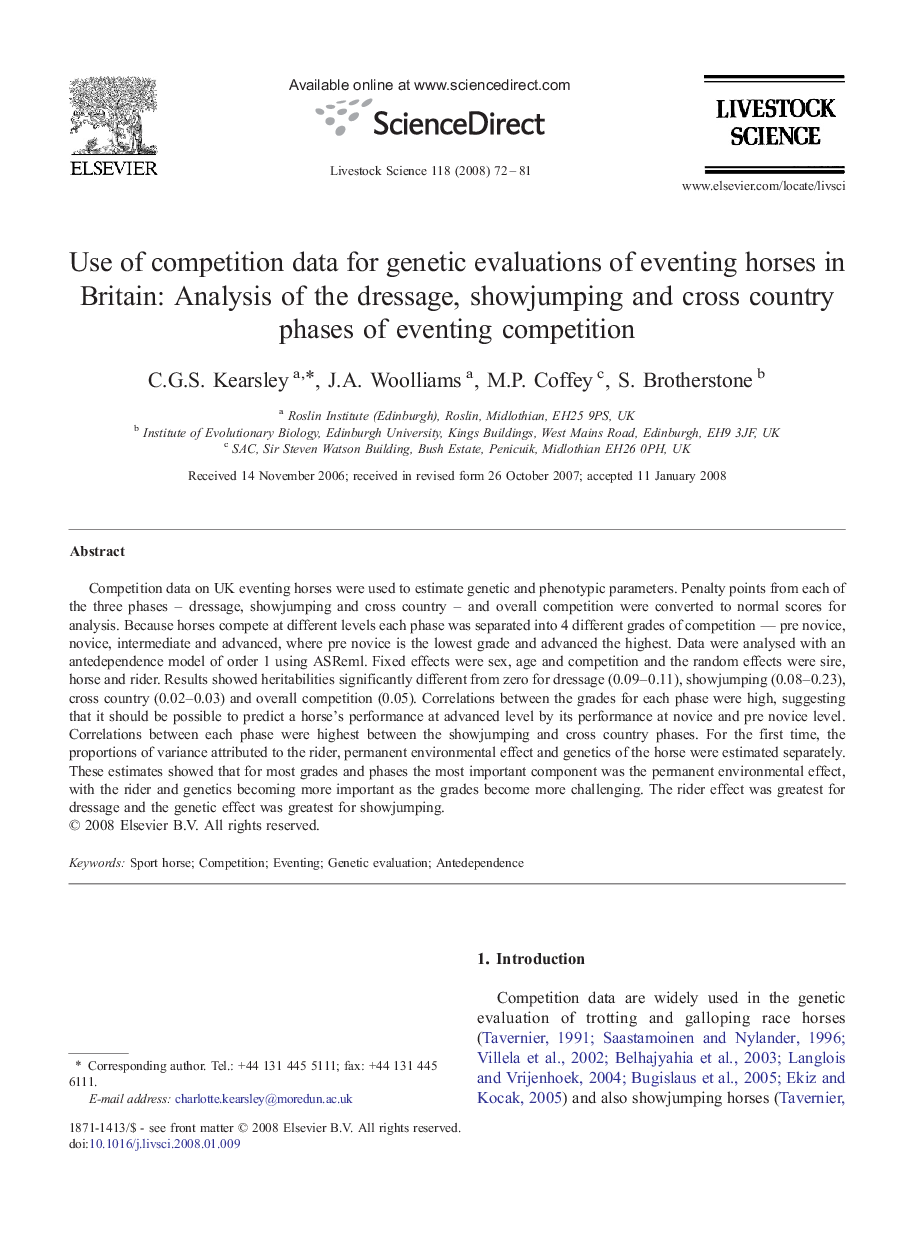| Article ID | Journal | Published Year | Pages | File Type |
|---|---|---|---|---|
| 2448560 | Livestock Science | 2008 | 10 Pages |
Competition data on UK eventing horses were used to estimate genetic and phenotypic parameters. Penalty points from each of the three phases – dressage, showjumping and cross country – and overall competition were converted to normal scores for analysis. Because horses compete at different levels each phase was separated into 4 different grades of competition — pre novice, novice, intermediate and advanced, where pre novice is the lowest grade and advanced the highest. Data were analysed with an antedependence model of order 1 using ASReml. Fixed effects were sex, age and competition and the random effects were sire, horse and rider. Results showed heritabilities significantly different from zero for dressage (0.09–0.11), showjumping (0.08–0.23), cross country (0.02–0.03) and overall competition (0.05). Correlations between the grades for each phase were high, suggesting that it should be possible to predict a horse's performance at advanced level by its performance at novice and pre novice level. Correlations between each phase were highest between the showjumping and cross country phases. For the first time, the proportions of variance attributed to the rider, permanent environmental effect and genetics of the horse were estimated separately. These estimates showed that for most grades and phases the most important component was the permanent environmental effect, with the rider and genetics becoming more important as the grades become more challenging. The rider effect was greatest for dressage and the genetic effect was greatest for showjumping.
